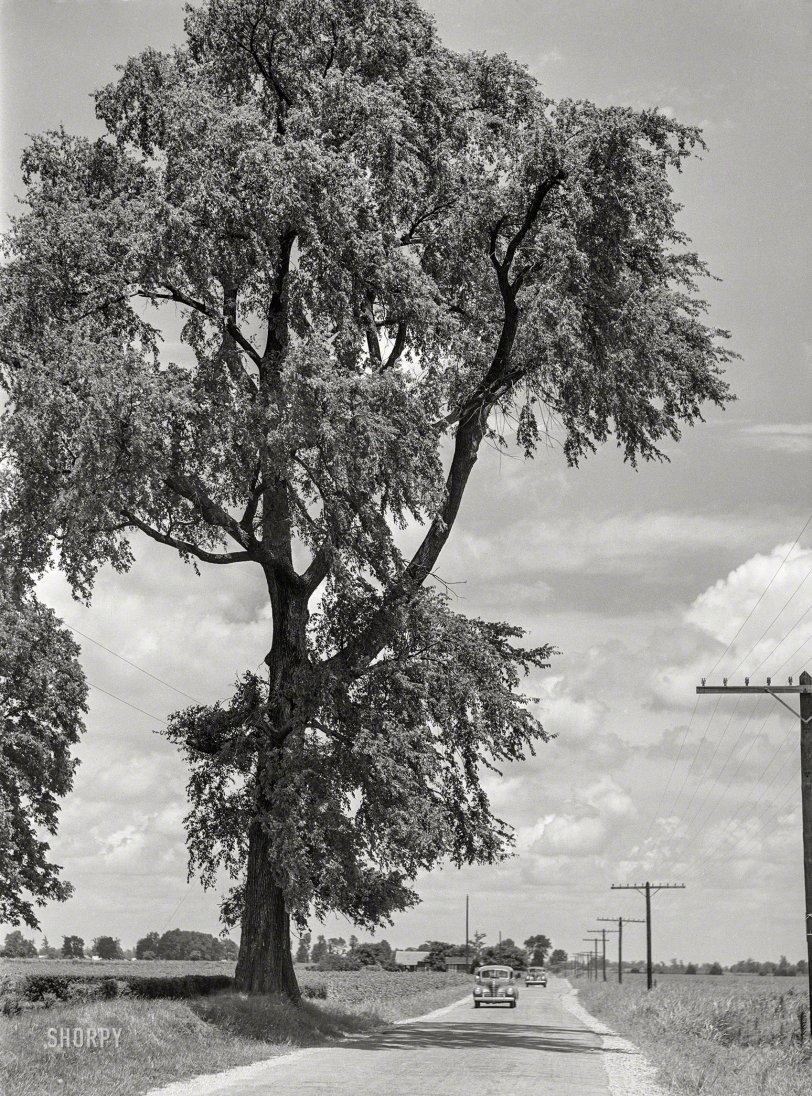


Framed or unframed, desk size to sofa size, printed by us in Arizona and Alabama since 2007. Explore now.
Shorpy is funded by you. Patreon contributors get an ad-free experience.
Learn more.

- Freeze Frame
- Texas Flyer wanted
- Just a Year Too Soon
- WWII -- Replacing men with women at the railroad crossing.
- Yes, Icing
- You kids drive me nuts!
- NOT An Easy Job
- I wonder
- Just add window boxes
- Icing Platform?
- Indiana Harbor Belt abides
- Freezing haze
- Corrections (for those who care)
- C&NW at Nelson
- Fallen Flags
- A dangerous job made worse
- Water Stop
- Passenger trains have right of way over freights?
- Coal
- Never ceases to amaze me.
- Still chuggin' (in model form)
- Great shot
- Westerly Breeze
- For the men, a trapeze
- Tickled
- Sense of loneliness ...
- 2 cents
- Charm City
- What an Outrage
- Brighton Park
Print Emporium
Throwing Shade: 1940

June 1940. "Highway near Clarksdale, Mississippi Delta." Medium format acetate negative by Marion Post Wolcott for the Farm Security Administration. View full size.
Which Highway?
Wolcott photographed US 49 the previous January, and it was much wider and better paved than this. US 61 was described in period travel brochures in glowing terms.
Highway 1, which runs to the west of Clarksdale, is shown as gravel on the 1940 map, but the road shown may meet the criteria. An IC branch line ran along it on the west side at Hillhouse. But according to Robert Johnson's lyrics, the railroad also went through Friars Point, which is not actually on MS-1.
I tend to guess MS-1 looking south, north of where the railroad comes close to the road.
Most people won't remember this, but the constant pounding of steam engine drivers and side-rods made telephone poles near the tracks in that part of the Delta to lean in alternate directions. They used steam there at least though 1959.
US 61, Southwest of Town
Based on the limited clues offered by the picture, you can't pinpoint an exact location. But, looking at a 1939 map of Mississippi, it is clear there are only three paved roads coming into Clarksdale -- US 61 from the north, US 61 from the Southwest, and US 49 from the Southeast. Both 61 North and 49 South run alongside railroad tracks. So, this is probably the legendary blues highway, as it comes into (or goes out of) Clarksdale from the southwest.
I can't match this photo up with anything on Street View. US 61 seems to come into Clarksdale the same way it always did before it spins off into a bypass. It is now a four lane road. Best guess is this tree disappeared as a result of road improvements or attrition. Of course, since this is Shorpy, it could have burned down.
Tree's company
A majestic example of an old-growth tree.
With the emerald ash borer, sudden oak death, and the slow disappearance of roadside woods, it's sad to think that such trees may become a thing of the past in the near future.
And a Parade of Plymouths
Both of the cars pictured appear to be 1939 Plymouths. The '39 P8 was most notable for its one-year-only square headlights. However, having a separate lens, bulb and reflector, the square headlamps suffered from moisture intrusion, which resulted in sockets rusting and the reflectors turning black. The 7-inch round sealed beam headlamp came along in 1940, with many cars converted to them.
Robert Johnson
Do you think the photographer was trying to find the "crossroad" thought to have been where the bluesman Robert Johnson allegedly made his deal with the devil? It looks very much like the various depictions in film and elsewhere made in subsequent years, and Clarksdale was supposed to be where it happened.
























On Shorpy:
Today’s Top 5